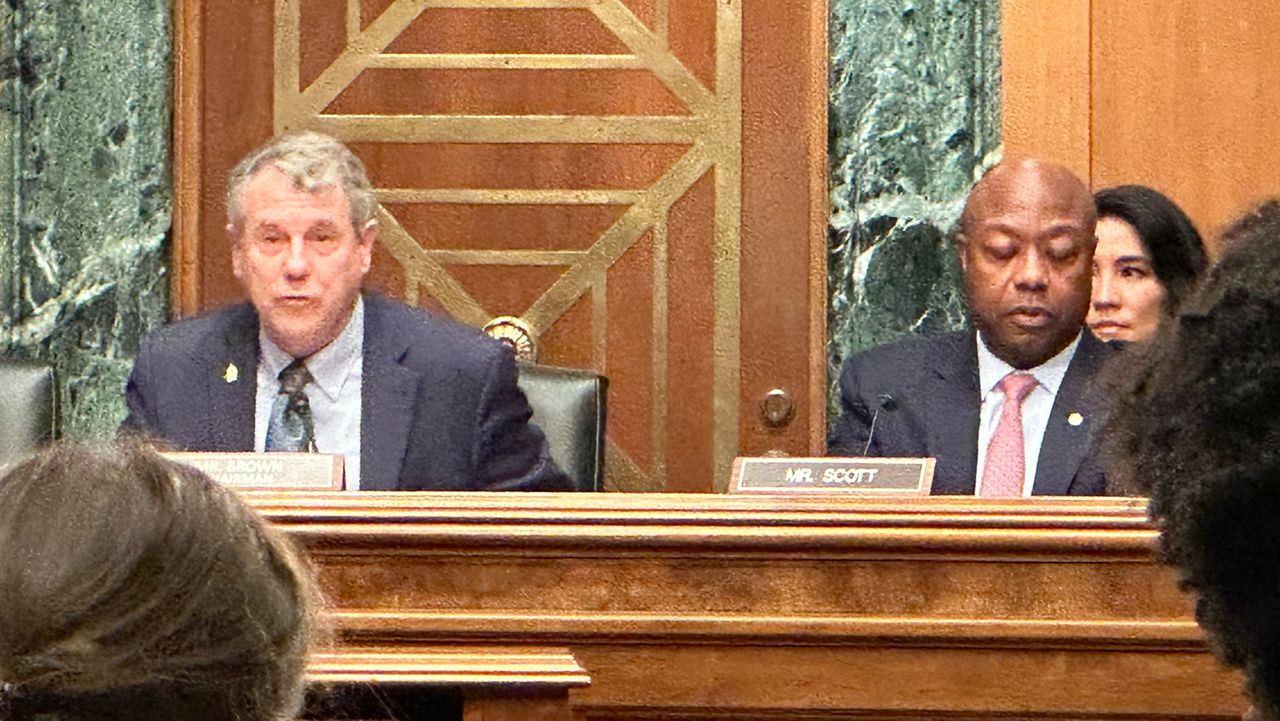WASHINGTON, D.C. — The cards have been dealt in Ohio’s Senate race: businessman Bernie Moreno will face off against incumbent Democrat Sen. Sherrod Brown in an election that could determine control of the U.S. Senate. Both candidates have quickly switched gears into attack mode, trying to tie the other to an unpopular president, either current or former.
What You Need To Know
- After winning the GOP primary, businessman Bernie Moreno will go up against Sen. Sherrod Brown in the general election
- The tone of the race is getting more personal as the candidates try to define their opponents
- More than $140 million has already been spent on campaign advertising in the state, according to AdImpact
Fresh off his GOP primary win, Moreno fired an opening salvo at Brown on immigration, saying in a FOX News interview that Brown “can't be for working-class Americans and support illegal immigration at the level we're seeing.”
Moreno has been trying to link Brown and President Joe Biden on issue that energize the Republican base, like security at the southern U.S. border and the Biden administration’s push to shift to electric cars.
Moreno is following in the footsteps of Sen. JD Vance, R-Ohio, who won the 2022 Senate race by hitching his wagon to former President Donald Trump and Trump’s MAGA movement.
Trump remains popular in Ohio. He previously won the state by 8 points in both 2016 and 2020.
Moreno has said he is counting on the support of Trump voters to coast through the general election.
“In the worst case scenario, President Trump is going to win this state by 8 points,” Moreno said in February when asked how he would convince non-Trump voters to support him. “Eight to 15 percent advantage over Biden is not only Republicans, but independents. Independents are swaying big time toward President Trump. The Black vote is swaying big time toward President Trump. He’s already upside down with Hispanics. I’d be the first Hispanic elected statewide, so we’ll have a big margin that way as well."
Some political analysts questioned that logic against a candidate like Brown, who has consistently outperformed his own party in Ohio.
“Good luck with that strategy,” said University of Akron political science professor Dave Cohen. “I don’t think Moreno is going to get Democrats to vote for him. I think he’s right if he’s talking about Democrats. But he has to get Never Trump voters, Nikki Haley voters to come home and to vote for him, and he needs to get independents to swing over to his side. Otherwise I think he has no shot at winning this race.”
Brown has historically had strong support among working-class voters. Many of those voters have turned away from the Democratic Party in recent years, but Brown is doubling down to keep them in his column.
“It all comes back to the dignity of work and making sure that people if you work hard, you ought to be able to get ahead in the country. Too many people have seen a system where because of corporate power and corporate greed, they’ve had a tougher time. My job is to work for them, work with them,” Brown said. “I’ll continue to advocate for that, the campaign will work as a result.”
In addition to boosting Democratic turnout, Brown’s challenge will be convincing moderate conservatives and independents that he can represent them better than the Republican candidate.
“Sherrod Brown and his campaign will try to define Bernie Moreno before he can define himself in front of the voters,” Cohen said.
Brown is also starting to directly criticize Moreno.
“He's a guy that’s trying to buy this Senate seat. He’s a guy that looks out for himself. He has actually said, ‘I’m not going to work with anyone I disagree with in the Senate,’” Brown said in an MSNBC interview.
After a spring primary, campaigns often see a slower period through the summer before ramping up again in the fall.
With the high stakes of this race, though, campaigning has not slowed down. More than $140 million has already been spent on campaign advertising in Ohio, according to AdImpact.










